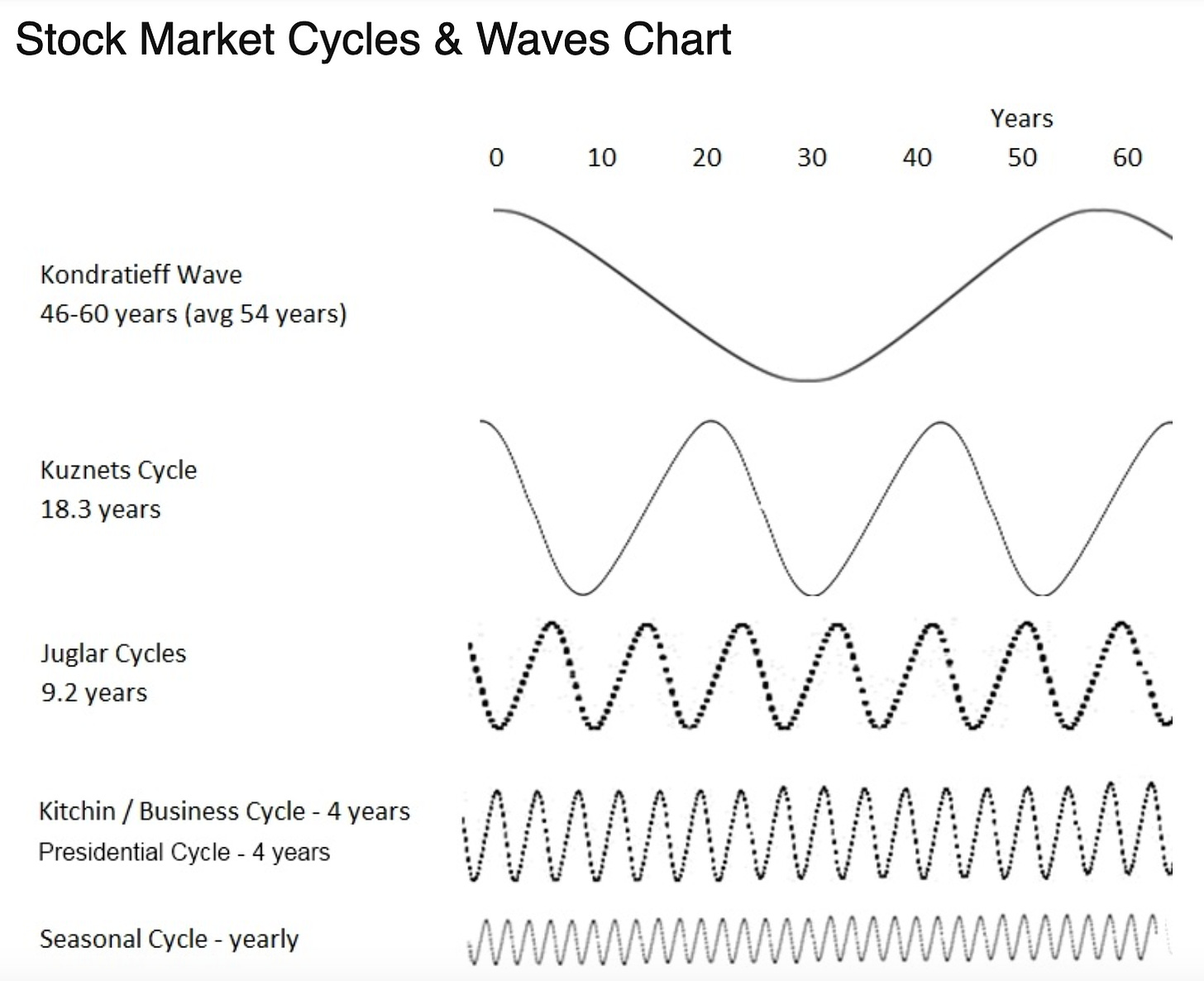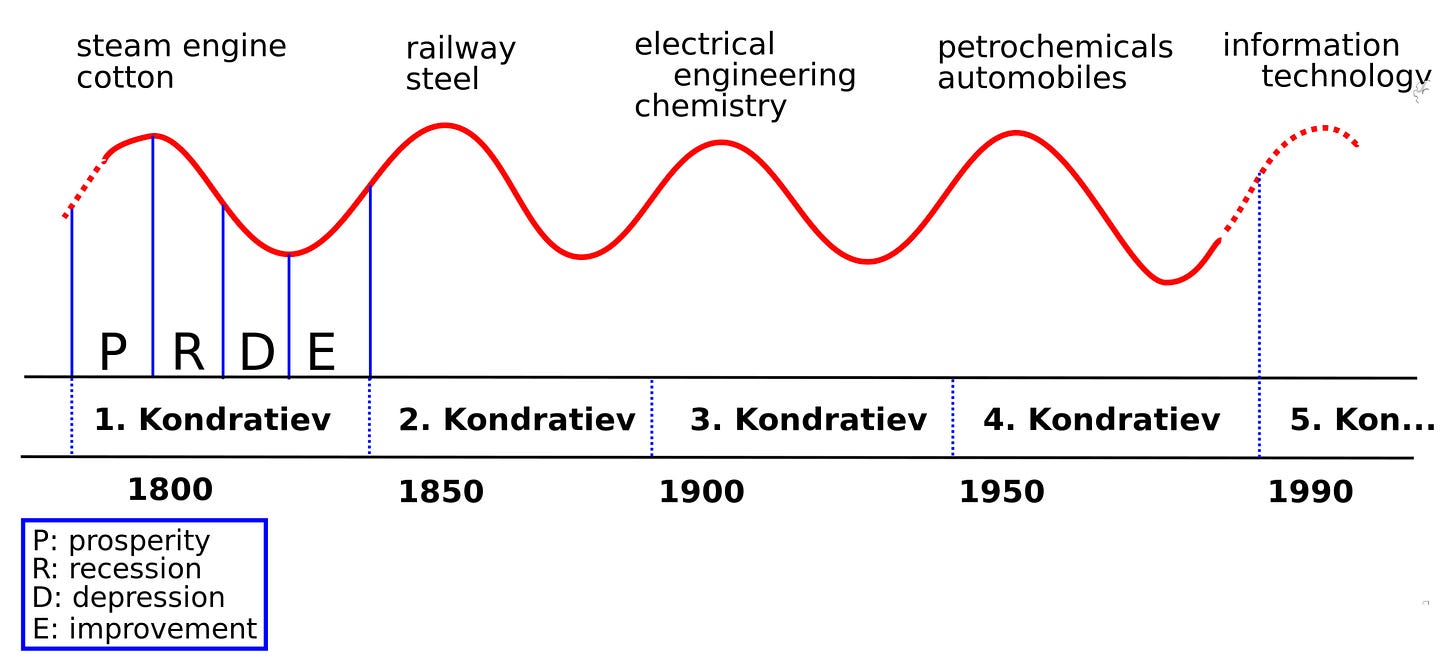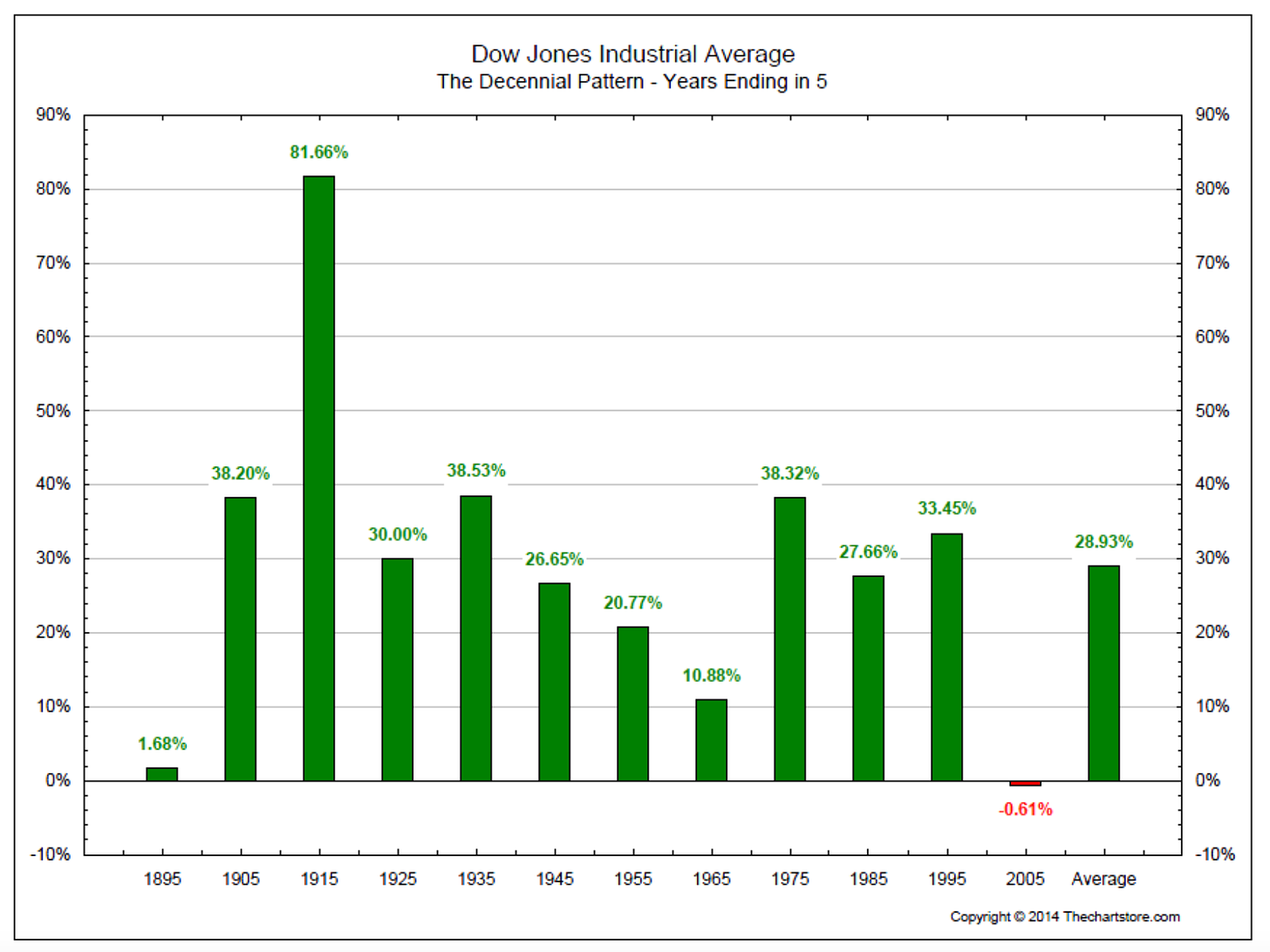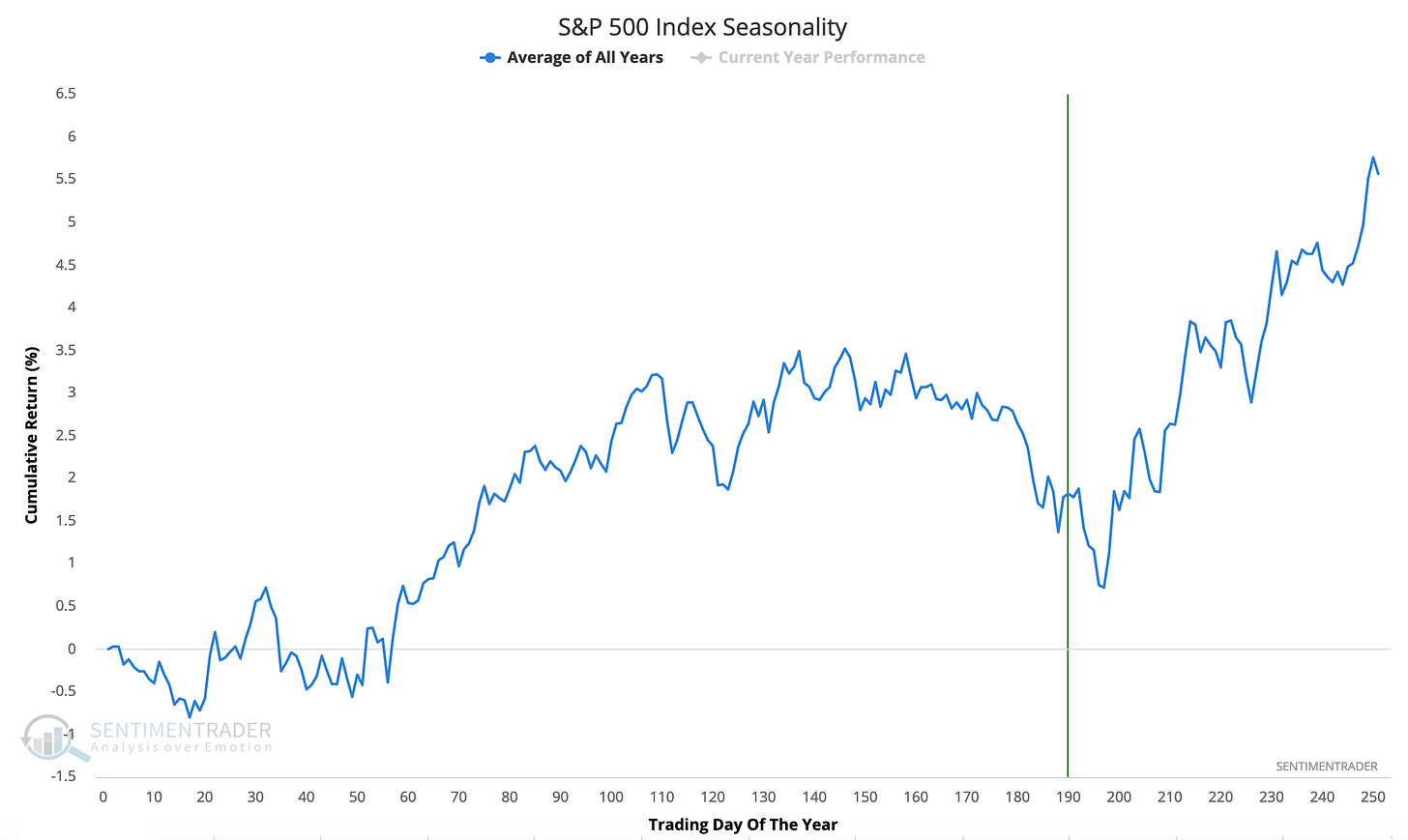Fixed economic cycles, also known as predetermined economic cycles or fixed-duration cycles, refer to the concept that economic expansions and contractions occur in a regular and predictable pattern with fixed durations. According to this theory, there is a predetermined cycle of booms and busts in the economy, characterized by periods of growth followed by periods of contraction.
Advocates of fixed economic cycles argue that internal factors within the economy, such as changes in investment, consumer spending, and business confidence, drive these cycles. They believe that these cycles adhere to a predictable pattern. While these patterns may not be 100% accurate in their predictability, they serve as a valuable tool for traders to identify high-probability periods with a directional bias based on cycles.
This educational piece covers 6 key fixed economic cycles:
1) Kondratieff Cycle
2) Kuznets Cycle
3) Decennial Cycle
4) Juglar Cycle
5) Kitchin Cycle
6) Seasonal Cycle
Kondratieff Cycle
The Kondratieff cycle, also known as the long wave cycle or Kondratieff wave, was discovered by Russian economist Nikolai Kondratieff in the 1920s. This theory suggests the existence of long-term cycles in economic activity, lasting 40 to 60 years. The typical number associated with this cycle is 53-54 years.
Kondratieff identified these cycles by studying various market components, including interest rates and commodities. He found that they are driven by major technological innovations and their subsequent diffusion throughout the economy.
The Kondratieff cycle consists of four distinct phases: Expansion (or Prosperity), Recession, Depression, and Recovery (or Improvement). These phases reflect the ups and downs of the economy over the course of the cycle.
Kuznets Cycle
The Kuznets Cycle, named after Nobel Prize recipient Simon Kuznets, spans approximately 15 to 20 years (typically 18.3 years). Kuznets identified this cycle and attributed it to investments in housing and building construction.
Kuznets connected the cycle waves to demographic processes, specifically the inflows and outflows of immigrants and the resulting changes in construction intensity. This association led him to label these cycles as "demographic" or "building" cycles.
Decennial Cycle
The decennial cycle, also referred to as the 10-year cycle or decadal cycle, highlights a recurring pattern observed in economic and financial phenomena over approximately 10-year intervals. This cycle suggests that economic variables and market trends exhibit consistent behavior every decade.
The decennial cycle is closely associated with long-term economic cycles and manifests in various aspects of the economy, including business cycles, market cycles, and demographic trends. It is rooted in the belief that economic and market conditions experience periods of expansion, contraction, and stabilization following a roughly 10-year pattern. As with any cyclical pattern, the decennial cycle should be considered as a broad observation rather than a precise predictor of future events.
Juglar Cycle
The Juglar cycle, named after French economist Clément Juglar, represents a medium-term economic cycle with an average duration of approximately 7 to 11 years (typically around 9.2 years). It is also known as the "fixed-investment cycle" or the "investment cycle."
Juglar cycles center around fluctuations in fixed investment, specifically in the construction and durable goods sectors. These cycles are characterized by alternating periods of expansion and contraction in investment activity.
Kitchin Cycle
The Kitchin Cycle, discovered by Joseph Kitchin in the 1920s, approximates a period of approximately 40 months (3.33 years). It is slightly shorter than the Presidential cycle, which spans four years. The Kitchin Cycle is often referred to as the "inventory cycle."
This cycle focuses on the fluctuations in inventory levels. It is primarily associated with changes in production and inventory accumulation by businesses. It suggests that there are periodic waves of inventory build-up and drawdown that significantly impact economic activity.
Seasonal Cycle
The seasonal cycle encompasses recurring patterns and trends in asset prices, trading volumes, and market behavior that occur within specific time frames throughout the year. These patterns can be observed across a wide range of financial instruments, including stocks, commodities, currencies, and bonds.
It's crucial to recognize that while seasonal patterns in financial markets have been historically observed, they are not guaranteed to repeat in precisely the same manner each year. Market dynamics can shift, and the impact of seasonal factors may vary over time.
Conclusion
Traders and investors can benefit from understanding Cycles as it provides insights into historical trends and potential opportunities. While Cycles are not 100% accurate, they provide a sharp Edge that is often overlooked by a lot of market participants. Cycles Edge believes that every tool that helps better time the markets is worth incorporating into a trading/investment strategy.
If you like these educational pieces, please leave a comment below. Also, let us know if there are specific market topics you’d like us to cover. Until next time!








